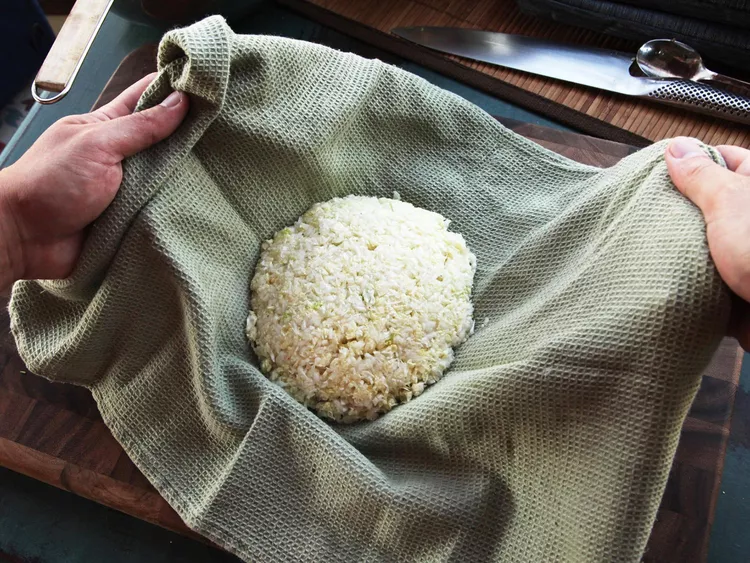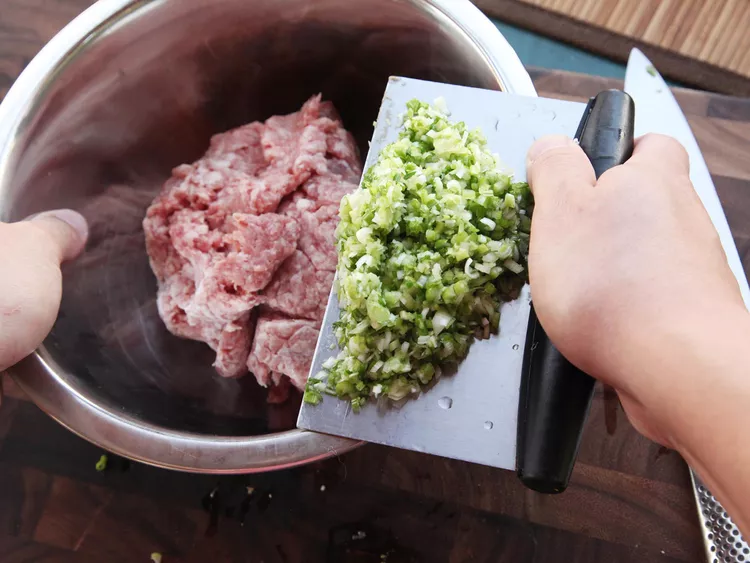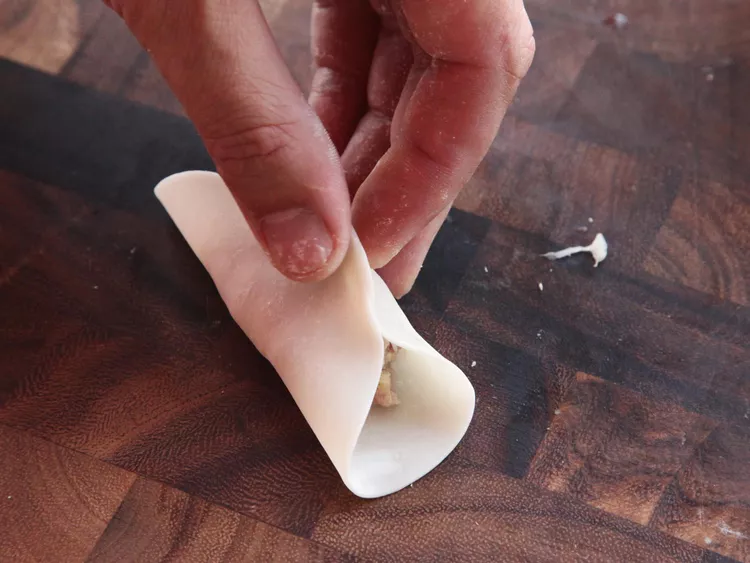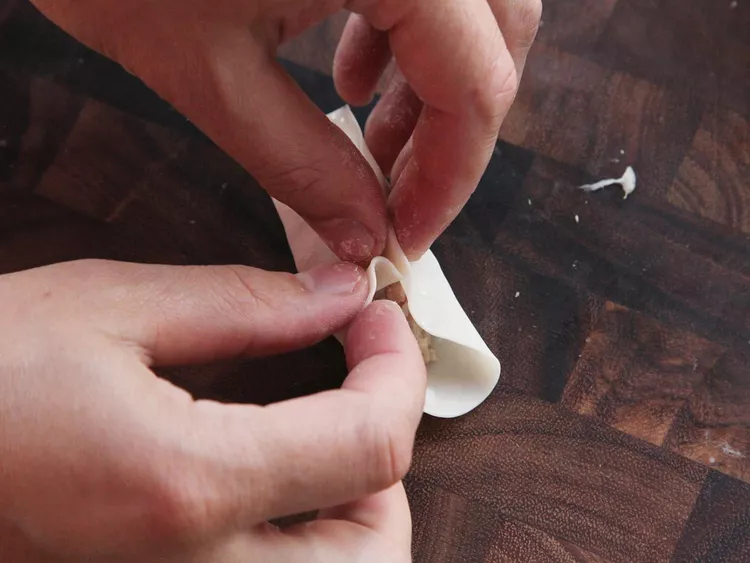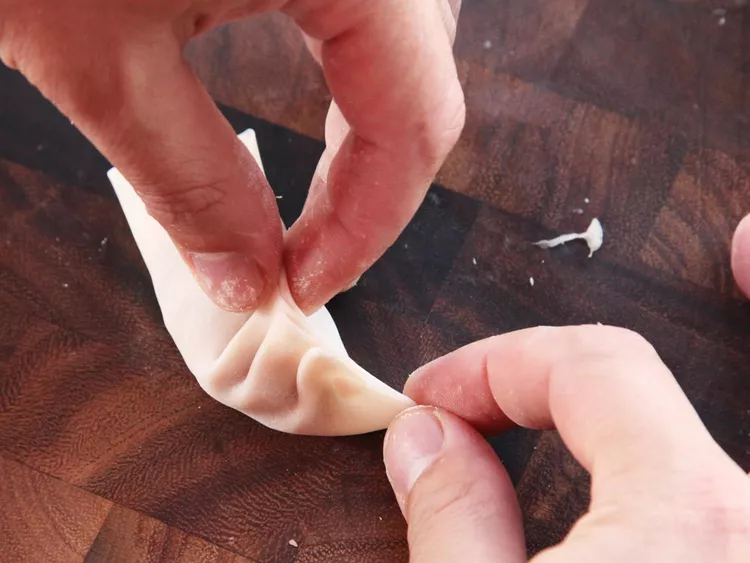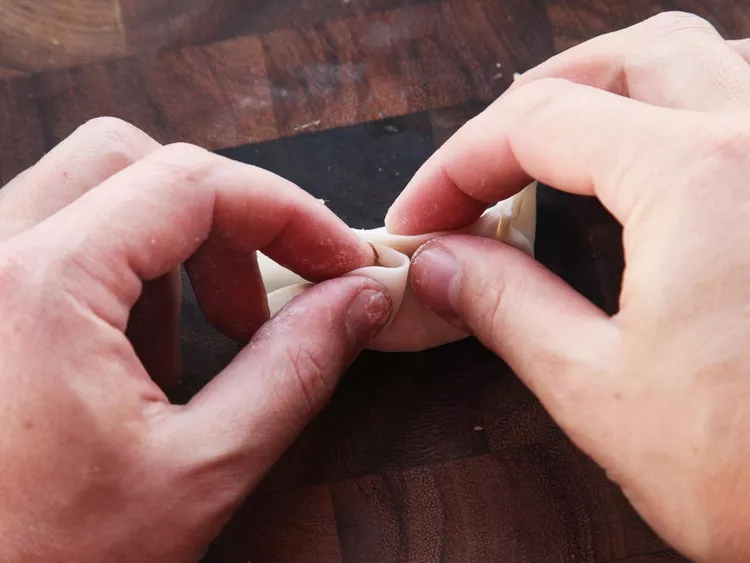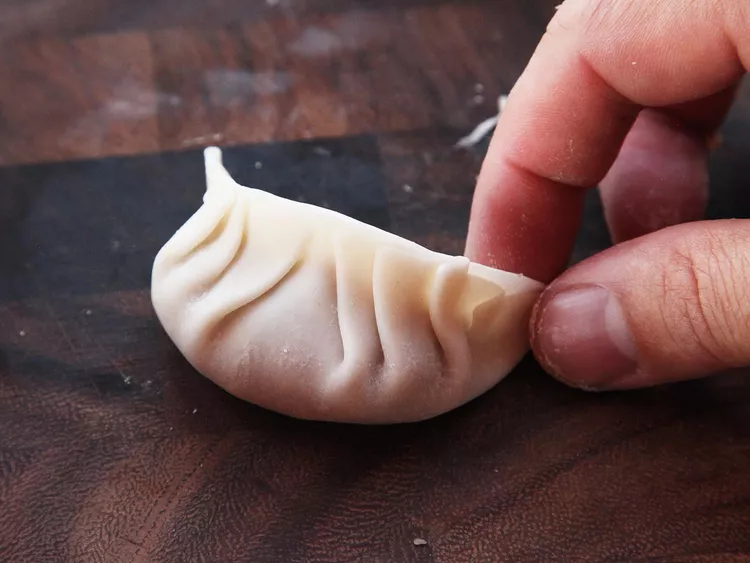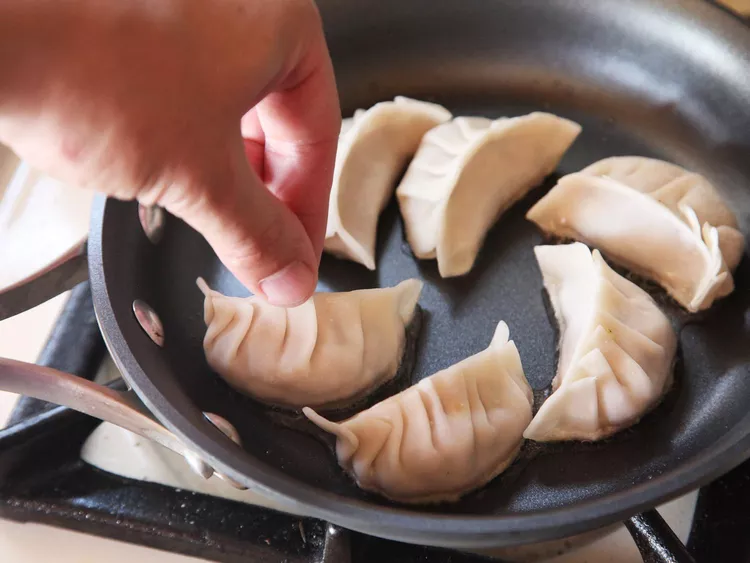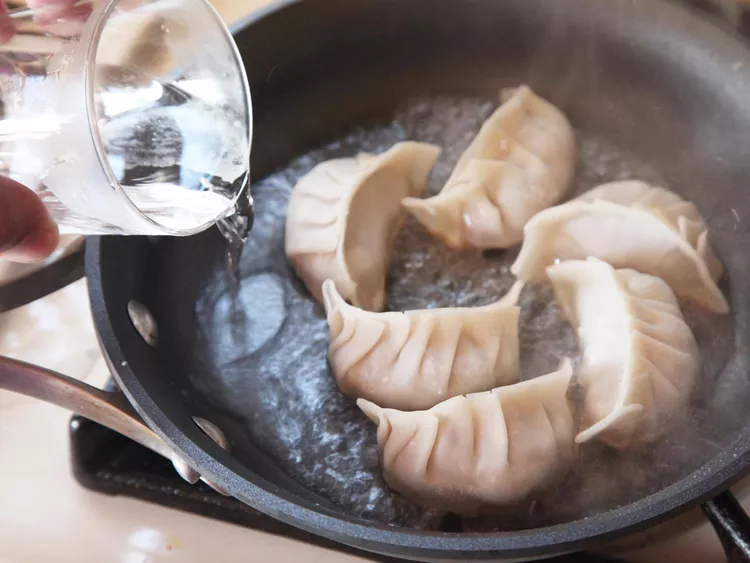Gyoza (Japanese Pork and Cabbage Dumplings)¶
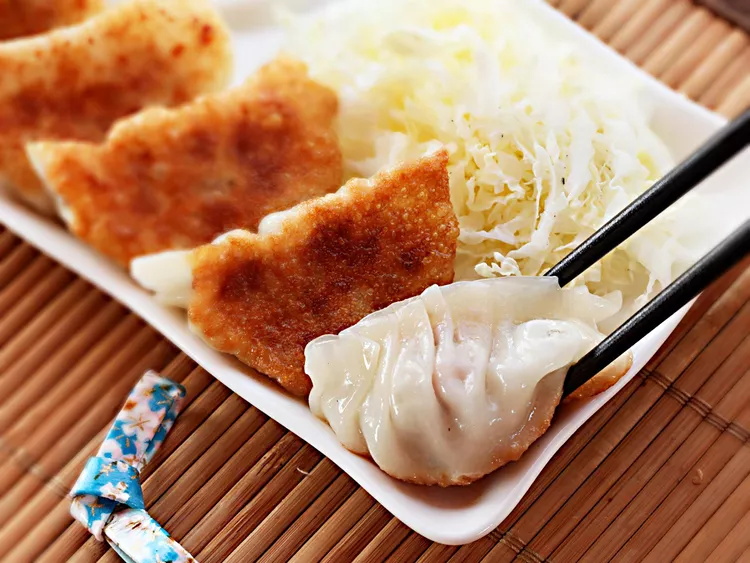
Ingredients¶
For the Dumplings¶
1 pound finely minced Napa cabbage (about 1/2 a medium head) or regular green cabbage
1/2 teaspoon kosher salt for cabbage
1 pound ground pork shoulder
1/2 teaspoon kosher salt for ground pork
1/4 teaspoon pepper
1 tablespoon minced fresh garlic (about 3 medium cloves)
2 ounces minced scallions (about 3 whole scallions)
2 teaspoons sugar
1 to 1.5 package dumpling wrappers (40 to 50 wrappers)
1 teaspoon minced fresh ginger (optional)
oil for cooking
2 pound finely minced Napa cabbage (about 1 medium head) or regular green cabbage
1 teaspoon kosher salt for cabbage
2 pound ground pork shoulder
1 teaspoon kosher salt for ground pork
1/2 teaspoon pepper
2 tablespoon minced fresh garlic (about 6 medium cloves)
4 ounces minced scallions (about 6 whole scallions)
4 teaspoons sugar
3 package dumpling wrappers (40 to 50 wrappers)
2 teaspoon minced fresh ginger (optional)
oil for cooking
For the Sauce¶
1/2 cup rice vinegar
1/4 cup soy sauce
2 tablespoons chili oil (optional)
Dumplings¶
Prepare Dumplings¶
Cut out the Core of the Cabbage
Mince the Cabbage
Salt and Wait
Here comes the moisture removal step: Salt the cabbage with kosher salt and let it rest for about 15 minutes in a strainer over a bowl. The power of osmosis will draw liquid out from inside the cabbage cell walls.
Squeeze that cabbage
Combine and Knead
Adjust the Seasoning
Transfer a teaspoon-sized amount to a microwave-safe plate and microwave on high power until cooked through, about 10 seconds. Taste and adjust seasoning with more salt, white pepper, and/or sugar if desired.
Setting up Your Station to Fill Gyoza
cutting board, preferably wood (the skins will not stick to wood as easily).
stack of pre-made round dumpling skins, kept under plastic wrap to stay moist. If you’re using frozen wrappers, make sure they are fully thawed.
bowl of filling with a spoon or small offset metal spatula for spreading it.
small bowl of water for moistening the edges of the dumpling wrapper.
clean dish towel for wiping fingers and cutting board to keep them dry between dumplings.
rimmed baking sheet lined with parchment paper for the finished gyoza.
How to Form Traditional Pleated Gyoza
To form dumplings, hold one wrapper on top of a flat hand. Using a spoon, place spread a teaspoon to 1 tablespoon-sized amount of filling in the center of the wrapper, in the shape of a disk.
Tip
Don’t make a ball. It will squish out the sides when folding the dumpling.
Use the tip of the finger on your other hand to gently moisten the edge of the wrapper with water (do not use too much water).
Wipe fingertip dry on kitchen towel.
- Automated method
Seal the dumpling
Moistening the edges all around.
Place the filling on the skin in the shape of a disk.
Pressed the edges together. Try to squeeze out any air bubbles.
Dumpling Maker
How to Freeze Gyoza
To freeze, place the entire tray of dumplings in the freezer uncovered until fully frozen, about half an hour.
Transfer the frozen dumplings to a zipper-lock freezer bag, squeezing out as much air as possible while sealing, and store the dumplings for up to two months. The dumplings can be cooked without thawing.
Cooking¶
Fry
Arranging gyoza in a non-stick skillet.
Fry the raw gyoza over moderate heat in oil with their flat side down in a cast iron or non-stick skillet, swirling the pan as they cook so that they crisp up evenly.
Keep frying (and don’t stop swirling!) until golden brown and blistered evenly across the bottom surface.
Add Water
Cover and Cook
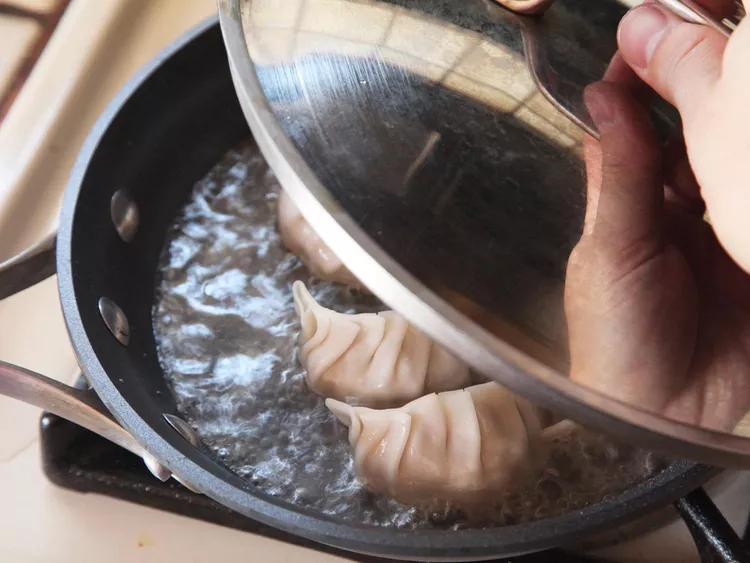
Cover the pan immediately. As the water evaporates, it’ll gently steam the tops of the dumplings, cooking the filling through and steaming the wrapper to a perfect tender-stretchy texture over the course of a few minutes.
Continue to swirl the pan gently as the dumplings steam to promote even cooking and to ensure that the dumplings don’t stick to the bottom too firmly.
Re-Fry Until Extra-Crisp!
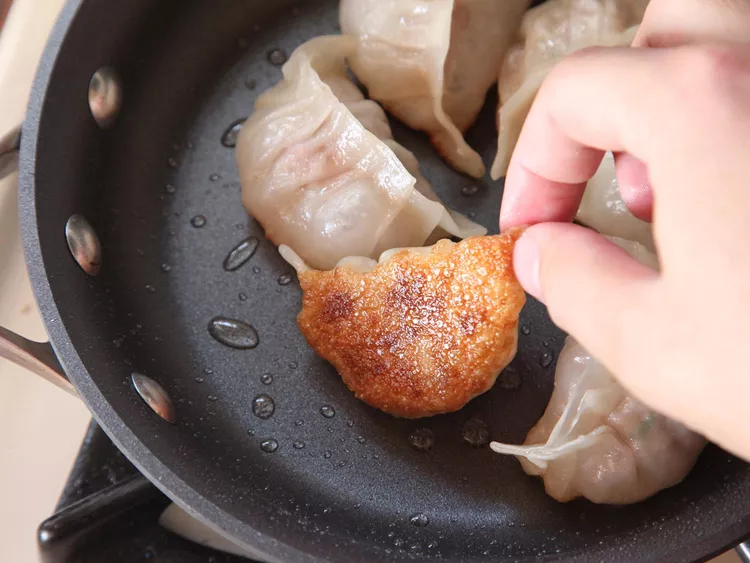
Remove the lid and keep cooking until the water has completely evaporated. You’ll find that as the liquid reduces, the oil will have a tendency to spit and sputter. Again, the answer is swirling the pan. This will limit spattering, promote even browning, and keep the dumplings from sticking.
Keep on cooking until the dumplings are once again crisp on the bottom.
Sauce¶
Combine vinegar, soy sauce, and chili oil.
Serve.


